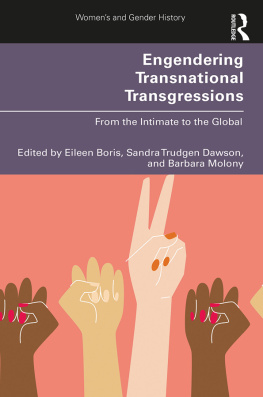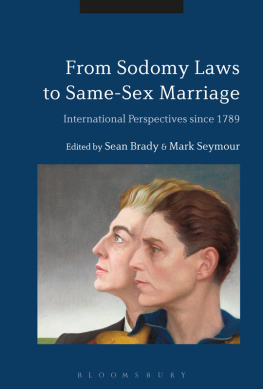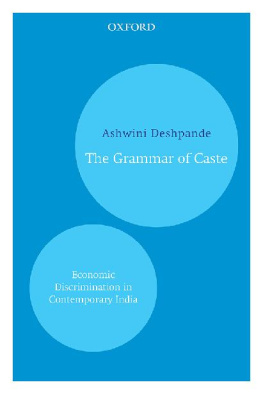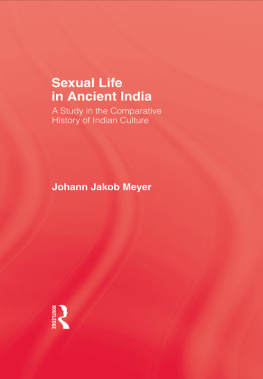Acknowledgments
Ive spent more than a decade working on this book, but it would have undoubtedly taken longer were it not for the love and support of many people and institutions.
First, thanks to the institutions that financially support critical interdisciplinary research of the kind seen here. At a time when the humanities are under pressure, such institutions help us to imagine and generate the many worlds that were and that could be. A grant from the Canadian Social Science and Humanities Research Council (SSHRC) enabled me to hire my wonderful research assistants Samantha Lafort, Shama Dossa, Sumaya Ahmed, and Rajani Bhatia; fund my research trips to India; and organize a conference on transnational approaches to girlhood. A National Endowment for the Humanities (NEH) summer stipend helped me write thorough assistance in the final stages of preparing this manuscript. To all my research assistants: much of your work was tedious, but I hope youre proud of the results.
Staying focused on writing was especially hard when I moved universities (and countries) midway through the project and took on a new role as editorial director of the journal Feminist Studies. Ill always be deeply grateful for the mentorship of Claire Moses, editorial director emerita of Feminist Studies, through this process. Her help with this manuscript has been a lifeline: her exemplary thoroughness as a reader and her prompt and thoughtful feedback helped me plug away with good cheer. Thank you, Claire, for your wise counsel on matters big and smallyour friendship means the world to me. The University of Maryland writing group that Laura Rosenthal initiated has been vital to my intellectual health: I thank Holly Brewer, Jessica Enoch, Kristy Maddux, and Laura Rosenthal for asking probing questions, sharing outsider perspectives, and offering encouragement. Several colleagues and friends read prior versions of chapters. Debra Bergoffen and Evi Beck engaged generously with material now in . At the University of Toronto, Alissa Trotz offered crucial feedback on my early proposals, and Michelle Murphy offered stimulating engagement with my ideas on girlhood. I am grateful to Eileen Boris for her support for the NEH grant proposal and for inviting me to present parts of this book at the International Conference for Research on Womens History. Cara Kennedy helped me broaden my framing for nonspecialists.
I have gained much from presentations at conferences and talks; some of the most thoughtful contributions came from the global childhoods conference that David Pomfret and Richard Jobs organized at Hong Kong University; the transnational girlhoods conference I organized at University of Toronto; the European South Asian Studies panel on girlhood with Ishita Pande; the Northwestern University conference on writing histories of childhood organized by Sarah Maza; and my ongoing exchanges with Corinne Field and Nicholas Syrettwith whom I share so much excitement about age as a category of analysis. Participants in my seminars on transnational approaches to girlhood at the University of Maryland also offered opportunities for me to think carefully about why my work should matter to those outside South Asia.
Anonymous reviewers appointed by the University of Illinois Press read two versions of this manuscript and at both times with remarkable thoroughness, offering ideas for improving the books structure, level of detail, and language. My manuscript is certainly the better for it. Dawn Durante at University of Illinois Press is a remarkable editorher passion for promoting innovative scholarship in girlhood studies is transforming the field of women and gender studies. Her promptness, reassuring manner, and smart ideas make working with her a delight. Thanks also to Mary Lou Kowaleski for her very thorough copyedits.
The Journal of the History of Childhood and Youth published The State as Surrogate Parent: Legislating Nonmarital Sex in Colonial India, 19111929 in volume 2, number 3 (Fall 2009), from which I drew parts of .
Archives, libraries, and the people who fund them have been crucial to my work. I am thankful for the India Office collections at the British Library, the National Archives of India, and the social science and medical journal collection at the Robarts Library of the University of Toronto, Widener Library at Harvard University, the National Library of Medicine, and the library consortium of the University of Maryland system. At the Library of Congress, I especially thank the UN documents specialists for assistance over several visits. I drew on the late Mukundrao Kirloskars personal collection of Stree magazines when taking photographs of covers, and I am thankful to him and to editor Vidya Bal for access and insights into this magazines history.
And then there are those who made writing this book easier because they keep other parts of my work life sane. Karla Mantilla and Brittany Fremaux, my stalwart superhuman colleagues at Feminist Studies, come first. Karlas impressive work ethic and unbelievable eye for detail helps the journal in countless ways, and Brittanys cheerful and creative approach to publicity and business takes the journal in new and exciting directions. Thank you both for being my rock. And the Feminist Studies editorial collective is a stellar group of scholars who have animated my intellectual life throughout the writing of this book: thank you to Judy Gardiner, Leisa Meyer, Kathryn Moeller, Jennifer Nash, Uta Poiger, Minnie Bruce Pratt, Priti Ramamurthy, Matt Richardson, Lisa Rofel, Evie Shockley, Millie Thayer, Charis Thompson, Kamala Visweswaran, and Attiya Ahmad. My wonderful Feminist Legal Theory book group and fellow board members of the Potomac Center for the Study of Modernity are a steady source of great conversation. My smart colleagues in a small department Alexis Lothian, Ivan Ramos, Michelle Rowley, Ruth Zambrana, Elsa Barkley Brown, Deborah Rosenfelt, Seung-kyung Kim, Katie King, Lynn Bolles, Carol Stabile, and LaMonda Horton-Stallingsbore added service burdens during my research leaves. Department staff members helped me hire research assistants and manage budgets: Angela Fleury and Meghan Sbrocchi at the University of Toronto, and Annie Carter, JV Sapinoso, Bobby Burgard, and Catalina Toala at the University of Maryland. My doctoral advisees Jaime Madden, Sara Haq, Cara Snyder, and Clara Montague each inspire me in different ways: their innovative projects, creativity in surmounting obstacles, and sense of humor have enriched my life at UMDthank you!
My family in India teaches me how to love across time, space, and emotional distanceby renewing bonds every time they get tenuous. Thank you, Baba, for your pride and your helpfrom mailing me rare books to talking about my work with people Id never know. Thank you, Abhi, for staying curious about what I do and reaching across the (yawning!) gap between our specializations to read my work. Your effort always touches me and your music rocks. Thanks to Vatsala Vedantam for modeling persistence and to Gayatri Vedantam and V. K. Viswanathan for modeling a life of the mind and wise ways to navigate academe. Thank you, Mami and Mama, Aparna, and Ambu and Shalini for being beacons of comfort. Thank you, Shruti, Ganesh, and Kaka, for being lasting political and intellectual allies.








